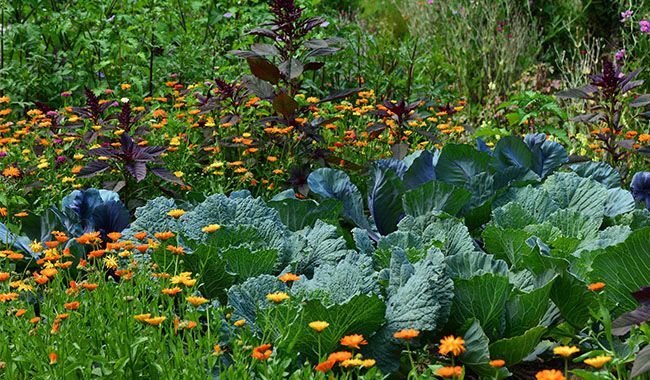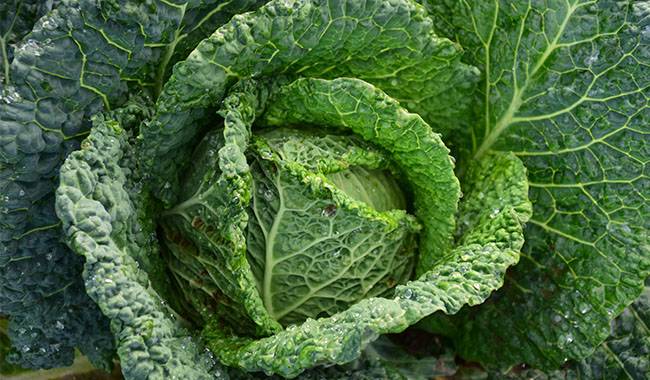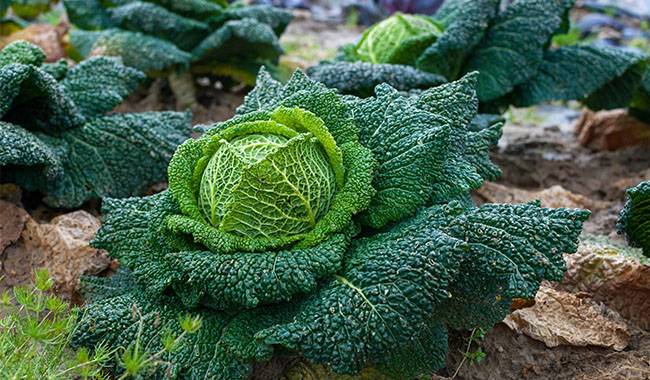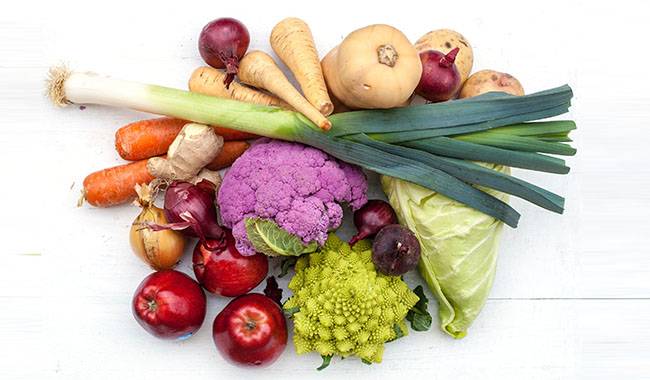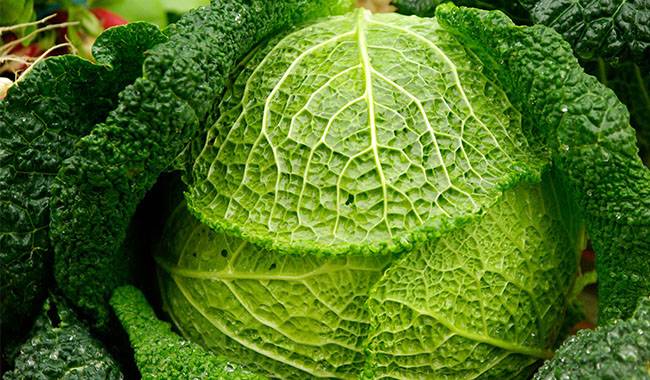
Cabbage is a very healthy vegetable that should be on our dinner table all year round. But the Cabbage group has a biological peculiarity. All species are severely affected by diseases and pests. Under production conditions, to obtain nice, healthy Cabbage heads without any signs of disease or damage from sucking and biting pests, they are treated with chemicals 2 times a week and are far from harmless. Therefore, we encourage you to grow your own Cabbage! And you should start by sprouting. In this article, you will learn how to grow Cabbage seedlings.
WHAT ARE THE CRITERIA FOR SELECTING CABBAGE SEEDLINGS?
In some regions, early, medium, and late-maturing Cabbage are grown by seedlings. To obtain healthy seedlings, it is best to purchase seed material at specialty stores. When buying seeds or seedlings, be sure to choose regionalized varieties. They are usually very resistant to pests and diseases. In addition, the seeds are already well prepared for planting and will not be expensive or time-consuming.
Be careful when buying seeds – the package should state the following.
- name of the variety and group (early, medium, late).
- region of planting.
- Date of sowing and planting (this information is an approximation).
- Approximate date of harvest.
It is best to plant Cabbage of various maturity stages in the home garden, using dense planting to reduce the space occupied by the crop.
Cabbage nursery techniques are practically the same for any area since artificial greenhouse conditions can be recreated in either growing area. Therefore, the proposed technique does not focus on the type of Cabbage (cabbage, hollow cabbage, Chinese cabbage, and others) but only on the process of seedling raising. Thus, the main difference in care begins with permanent planting, especially in open fields.
WHAT KIND OF CONTAINERS ARE SUITABLE FOR GROWING CABBAGE SEEDLINGS
The leaves of Cabbage seedlings are very fragile and easily damaged, so you should consider them in advance.
- Without picking.
- With picking.
- In different containers.
- In planting boxes, etc.
Considering the fragility of young leaves, Cabbage is best grown without picking, one plant at a time, in a separate container. It should be noted that in some cases, it is advantageous to grow by picking. If seedlings are sown early and cannot be transplanted permanently due to weather conditions, then picking will stop the plant’s growth. The seedlings will be squat and have a thick, straight stem. They will be more easily transplanted to the seedbed later.
PREPARING POTTING SOIL FOR CABBAGE SEEDLINGS
A well-aerated, lightweight substrate with a good supply of nutrients, permeable but moist enough for seedlings to grow in. Such a soil mixture can be made from the following components.
- Sheet or turf soil as a substrate. You can use both types of soil in the same proportions.
- old mature humus or bio-humus. Peat can be used instead of these ingredients.
- Add river sand, sawdust, and perlite to create friability.
These ingredients are mixed in the following ratio, 1:2:1.
A simpler composition can be suggested – 20 parts of sod or clean garden soil without herbicides, 5 parts of ash (the main source of macro and microelements), 1 part of lime, and 1 part of sand.
The mixture is mixed and sterilized by one of the available methods.
- By freezing.
- By calcination.
- By steaming.
- Pickling.
The final step in preparing the potting soil mixture is fertilization. To 22 Lb (10 kg) of decontaminated substrate, add 15-20 g of urea or ammonium nitrate, 20-25 g of granulated calcium superphosphate, 10 g of potassium sulfate, and 25 g of lime. If these components are not available, 30-35 g of nitrocellulose can be added to the soil mixture.
7-10 days before sowing in containers, treat the disinfected soil mixture with biological agents resistant to fungi (black tibia, bacterial diseases, etc.) according to the recommendations: phytospore powder, alliin, gamel. A dry preparation containing beneficial microflora is added to the moist mixture. Useful microorganisms help improve soil composition while destroying disease-causing microflora. Prepare the soil mixture carefully to ensure that the seedlings have a healthy root system.
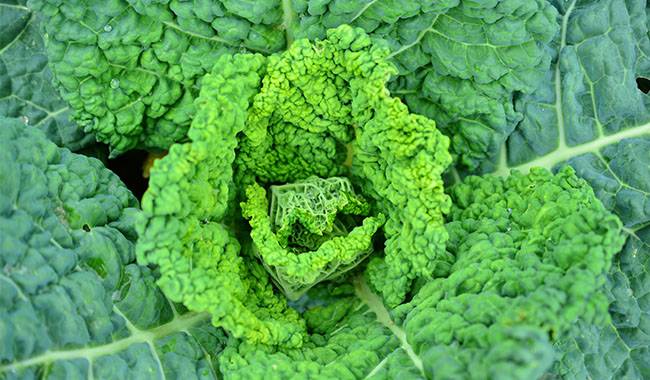
SOWING CABBAGE SEEDLINGS
When to sow Cabbage seedlings
- Early Cabbage varieties are sown in early February or early March.
- Medium – from the third decade of March to the end of April.
- Late – in the first to the second decade of April.
The recommended sowing dates for cabbage seeds are approximate and depend on the variety, maturity, light, and temperature conditions of the region. When sowing seeds, the length of the growing season of the crop should be used as a guide. Early maturing varieties can be harvested after 90-120 days, medium maturing varieties – 150-170 days, and late-maturing varieties – 160-180 days. You can sow each variety at once or plant seeds of each variety 10-12 days apart on a conveyor belt. Then there will always be fresh Cabbage salad on the table.
How to sow seedlings
Prepared substrate-filled containers: boxes, cups, peat pots, and other containers. Inboxes, sow seeds in rows, leaving 1-2 inches (2.5-5 cm) between furrows and 0.4-0.8 inches (1-2 cm) in each row. If using a single-seed container, scatter 2 seeds in the center. After germination, remove weak seedlings. Seeds should be sown to a depth of approximately 0.4 inches (1 cm). After sowing, cover boxes and other containers with aluminum foil to create greenhouse conditions.
Temperature suitable for seedlings
Soil and air temperature conditions are very important for healthy seedlings at different stages of seedling development.
From sowing to seedling emergence (5-7 days), the soil temperature in the simple greenhouse is maintained at 64-68 °F (18-20ºC) and the air: 44-48 °F (7-9ºC) at night and 46-50 °F (8-10ºC).
After germination, when seedlings reach 12-15 days old, the soil temperature should be reduced to 59-62 °F (15-17ºC) during the day and 53 °F (12ºC) at night. During this period, the air temperature will vary between 46-50 °F (8-10ºC) during the day and 44-48 °F (7-9ºC) at night.
Cabbage seedling germination
Germinate two-week-old seedlings (at the stage of spreading achenes or first leaves) into 2×2 inch (5×5 cm), 2.7×2.7 inch (7×7 cm) boxes, or pots, depending on the variety and seedling development. Seedlings should be pruned at the root tip and gently submerged in the soil until they reach the cotyledons. Seedlings should be harvested in a 2×2 inch (5×5 cm) arrangement. From harvesting to seedling hardening, maintain soil temperatures at 50 °F (10ºC) at night and 57-60 °F (14-16ºC) during the day. The air temperature is about 44-50 °F (7-10ºC).
CARING FOR CABBAGE SEEDLINGS
Lighting and watering
Seedlings need extra light if the weather is overcast. This will delay the development of the seedlings. A fluorescent lamp can be used for 12-15 hours a day.
The substrate should be kept moist throughout the care period. Too much moisture should be avoided, especially at low temperatures. If there is too much moisture, the seedlings’ fragile root systems will suffer from root rot. Therefore, the soil should be moistened with a sprayer before the seedlings emerge from the soil. Thereafter, water moderately once a week.
Protect sprouts from pests and diseases
Most commonly, cabbage seedlings are affected by fungal diseases: blackleg, mucilaginous and vascular bacterial diseases, and Fusarium wilt.
To avoid the loss of some seedlings due to diseases, implement the following measures.
- Water the seedlings with solutions of biological agents phytosporin and trichothecene, as recommended.
- Dry the soil with dry sand or moist ground cover.
- Reduce the frequency and intensity of watering.
- Increase the room temperature.
In addition to diseases, cabbage shoots need to be protected from insect pests. More than six of these pests will kill the crop: cabbage flea, cabbage moth, chard moth, and cabbage whitefly, cabbage aphid, and others.
When the first pests appear, treat the seedlings with a mixture of biological preparations. Bitoxybacillin is effective against leaf-eating pests, various moths, cruciferous fleas, and whiteflies. Chemical agents should not be used on Cabbage as they will remain in the forming Cabbage or inflorescence.
Fertilization and seedling hardening
If Cabbage seedlings are stunted, fertilize with chicken manure or cowpea solution at the 2-3 leaf stage. If not, make the first fertilizer application, a solution containing 20 g ammonium nitrate, 20-25 g water-soluble granular calcium superphosphate, and 5-10 g potassium chloride per bucket of water. This complex solution can be replaced by dissolving 30-35 grams of nitroglycerin in 2.5 Gal (10 liters) of water. The second feeding of the same composition should be carried out after 10-12 days and the third (if necessary) after 15-20 days. After foliar spraying, be sure to wash the plants with water and mulch the soil.
During the 12-15 days before planting in the ground, the seedlings are hardened, i.e., they are accustomed to developing in lower temperatures, more oxygen, and stronger light. During this period, the air temperature should not exceed 44-46 °F (7-8ºC) at night, 57-59 °F (14-15ºC) during the day in clear weather, and 53-57 °F (12-14 ºC) on cloudy days. Seedlings should be treated with 1% Bordeaux mixture 2 to 3 days prior to transferring them to the field.
Transplanting cabbage shoots to open fields
Plant early seedlings in the open ground at 45-55 days of age. The plant has a stout stem with 5-7 leaves, a single leaf plate, no spots, and a well-developed root with leaf-like branches.
Medium and late varieties – 35-45 days old seedlings, available for planting at the height of 7-8 inches (18-20 cm) or 8-10 inches (20-25 cm), with 5-6 true leaves, elastic stems, well-developed root system.
Dear readers
There is a lot of numerical material in this article. But this is an average guideline. In each case, they will be different, although the values are close.
More Related Information About Planting & Growing Cabbage Plants




